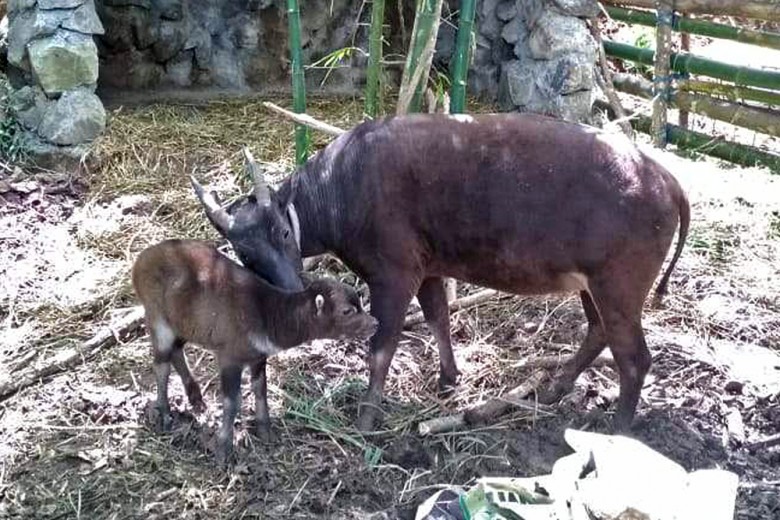Where are the anoas? Central Sulawesi’s midget buffaloes no longer in sight
An animal researcher of Lore Lindu National Park (TNLL) in Central Sulawesi has claimed that a mammal endemic to the province, the anoa, has rarely been spotted in recent years because of rampant illegal logging and animal poaching.
Change Size
 Denok (right), a female anoa, helps her baby stand up at the Manado Environment and Forestry Research and Development Agency’s (BP2LHK) Anoa Breeding Center in North Sulawesi on Tuesday. The baby, which is also female, was born on July 25, making her the third successful anoa birth at the breeding center. (JP/Evangline Aruperes)
Denok (right), a female anoa, helps her baby stand up at the Manado Environment and Forestry Research and Development Agency’s (BP2LHK) Anoa Breeding Center in North Sulawesi on Tuesday. The baby, which is also female, was born on July 25, making her the third successful anoa birth at the breeding center. (JP/Evangline Aruperes)
A
n animal researcher of Lore Lindu National Park (TNLL) in Central Sulawesi has claimed that a mammal endemic to the province, the anoa, has rarely been spotted in recent years because of rampant illegal logging and animal poaching.
Idris Tinulele, the researcher, said traces of footprints of the midget buffaloes could still be found in the park, but the animals themselves were rarely seen.
“It is because their habitat in TNLL had been damaged by illegal logging activities in addition to their being hunted for consumption,” Idris said, adding that he hoped the government would consider breeding anoa like it did with maleo birds.
He said that, in the 1980s, anoas could easily be spotted in TNLL, the natural habitat of two species of anoa, the Bubalus quarlesi and the Bubalus depressicornis.
With the destruction of their habitat, locals may find anoas entering their housing compounds in Kanawu, one of four subdistricts located around Lake Lindu. “It’s very regrettable if the anoa are facing extinction,” he said.
The head of the TNLL center’s technical division, Dedy Asriadi, confirmed that anoas were rarely spotted in the park. He said the center did not have the latest data on the population of anoa in the area.
“It’s difficult for us to count the population considering [the lack of data],” he said.
He said the latest data recorded in 2013 showed that the population of anoa was 140, a sharp decline from the 1,000 in previous years.
The anoa has been a protected animal since 1931. The International Union for Conservation of Nature (IUCN) has listed the anoa as an endangered species since 1986. (ahw)









